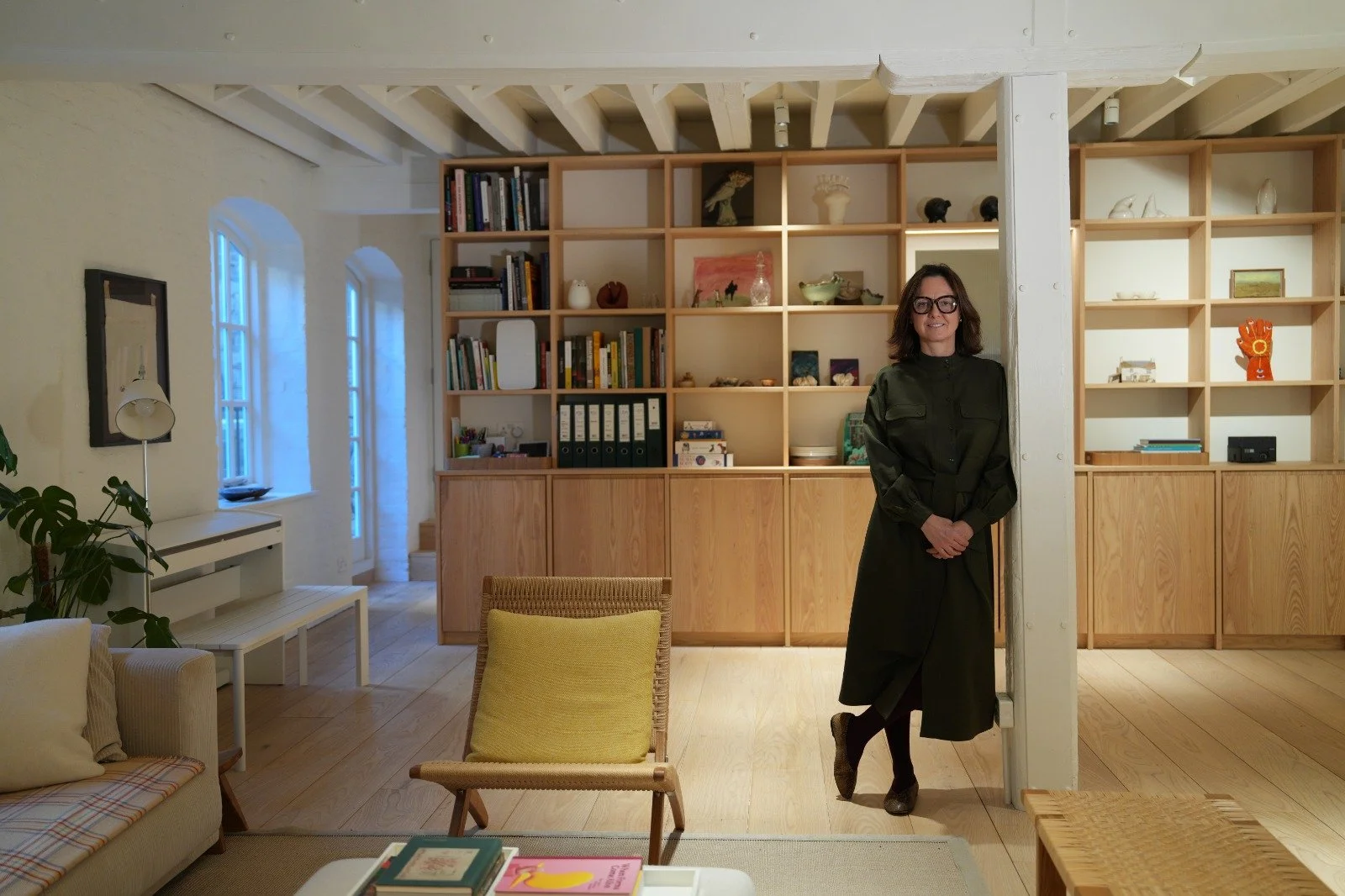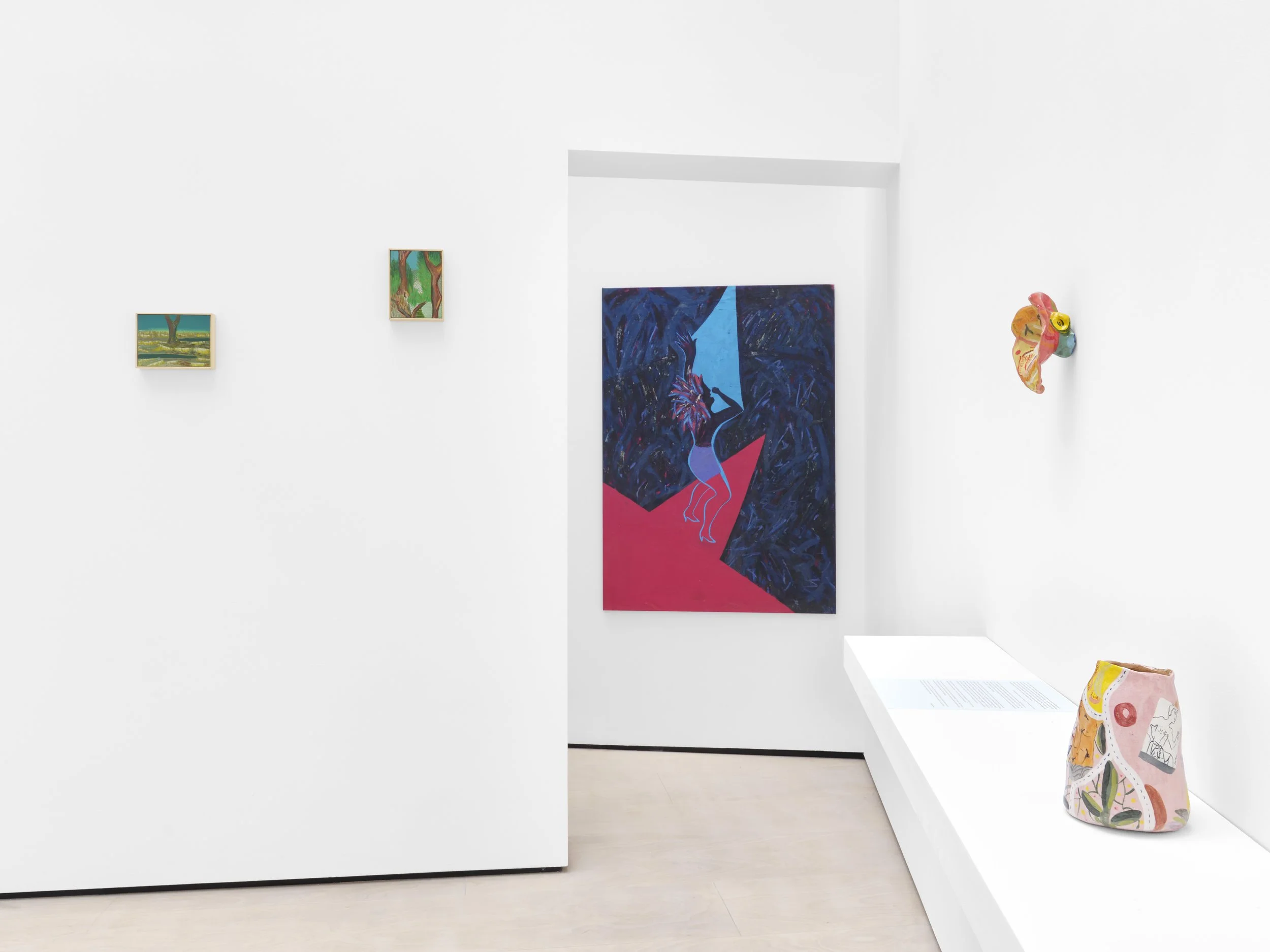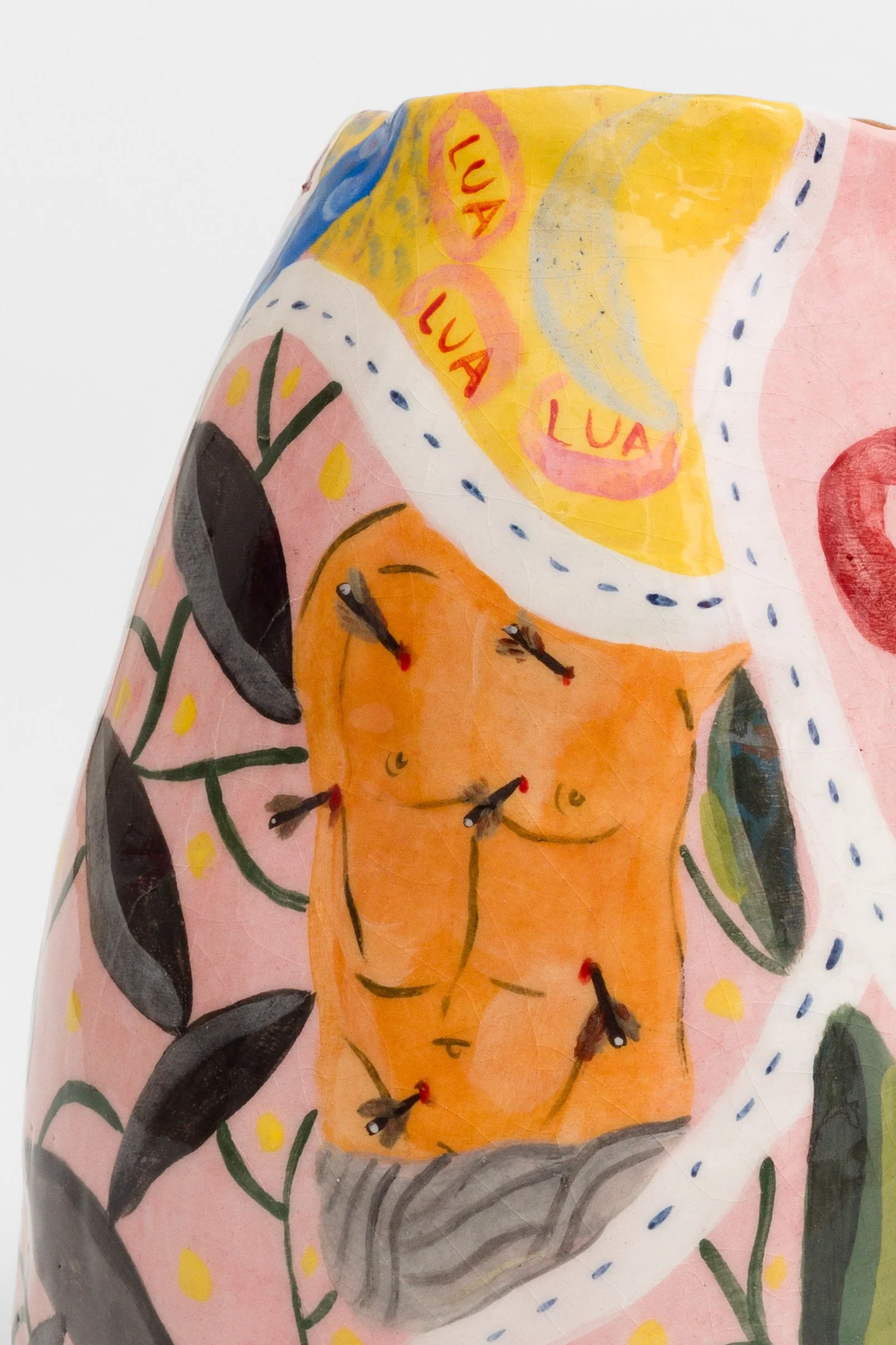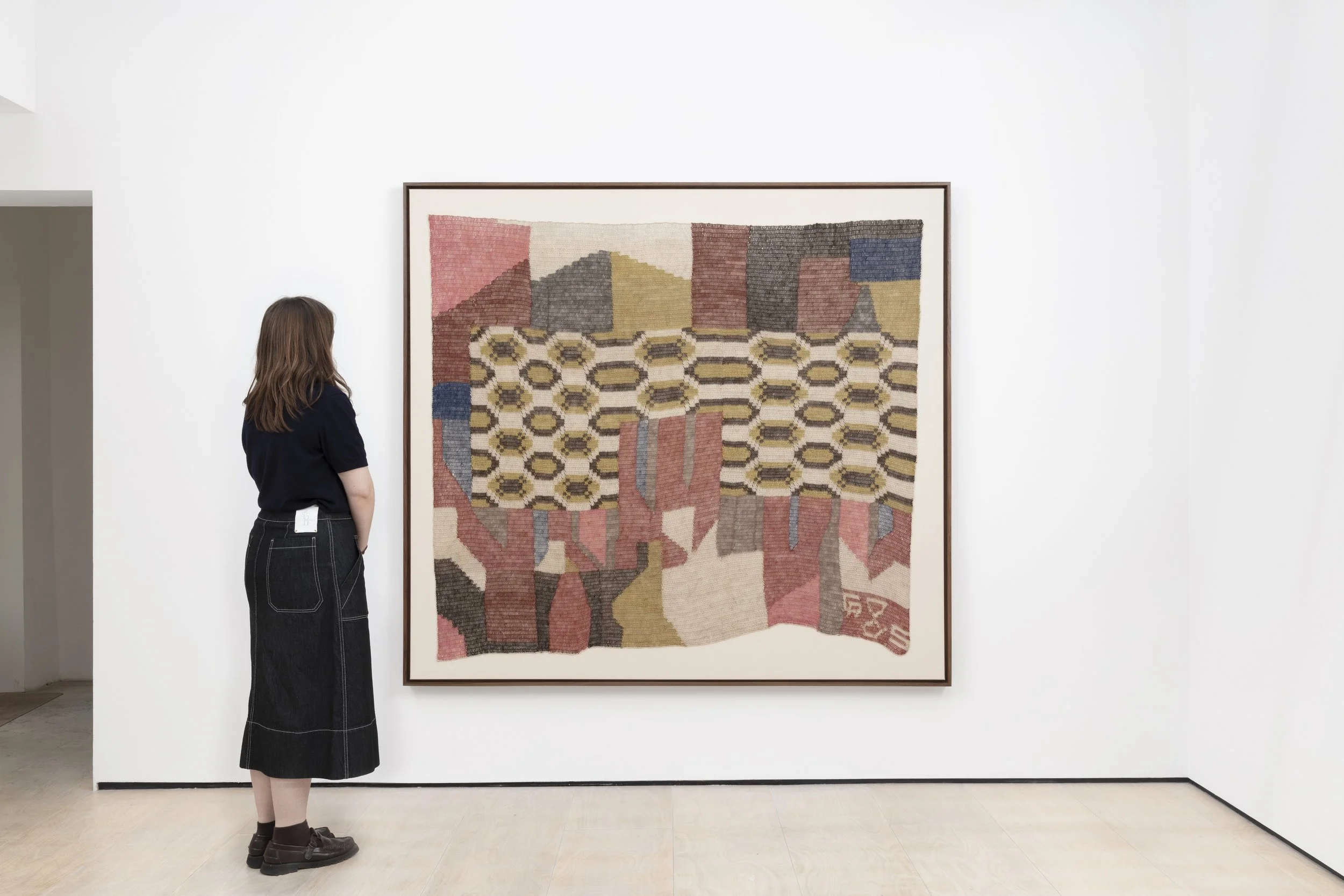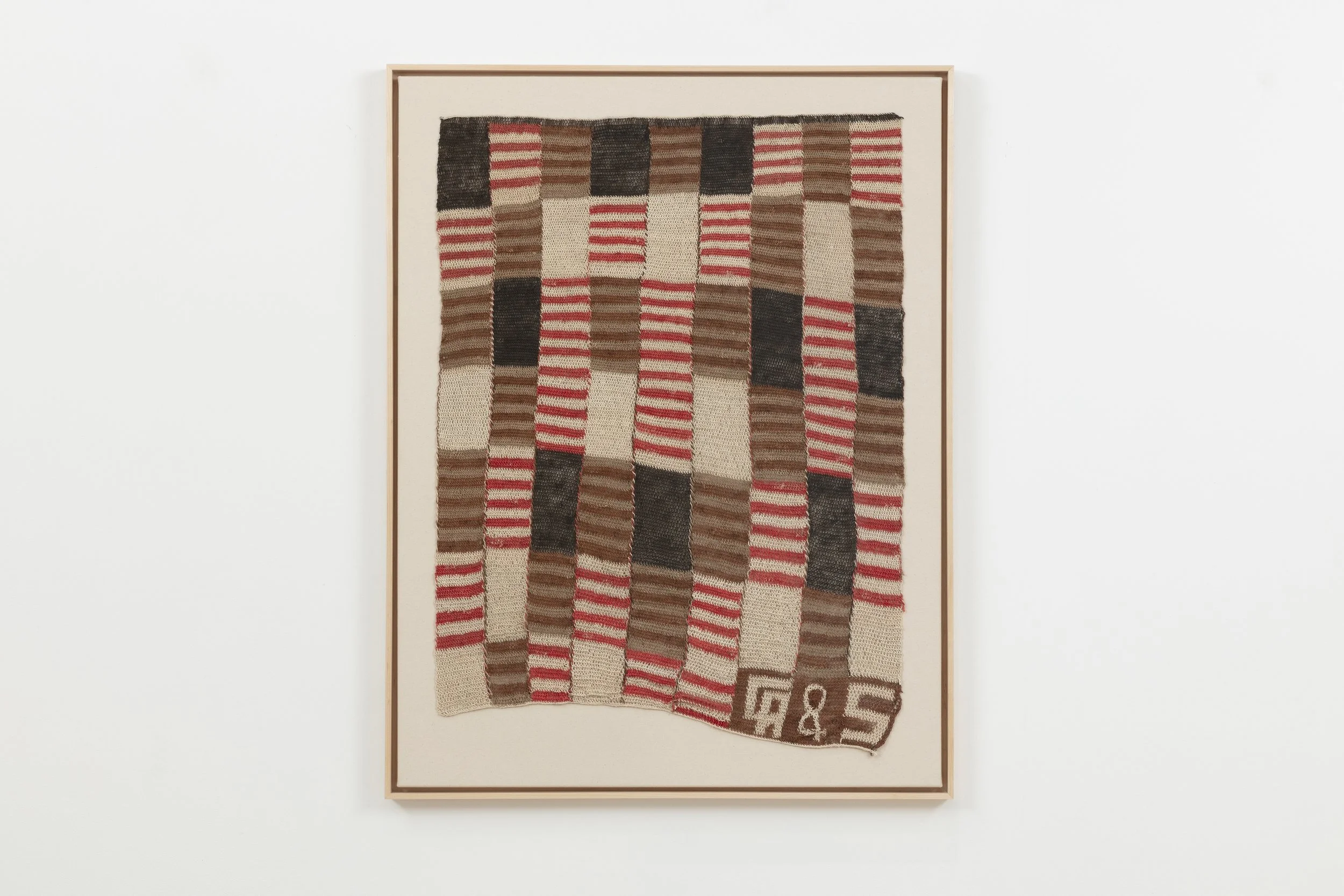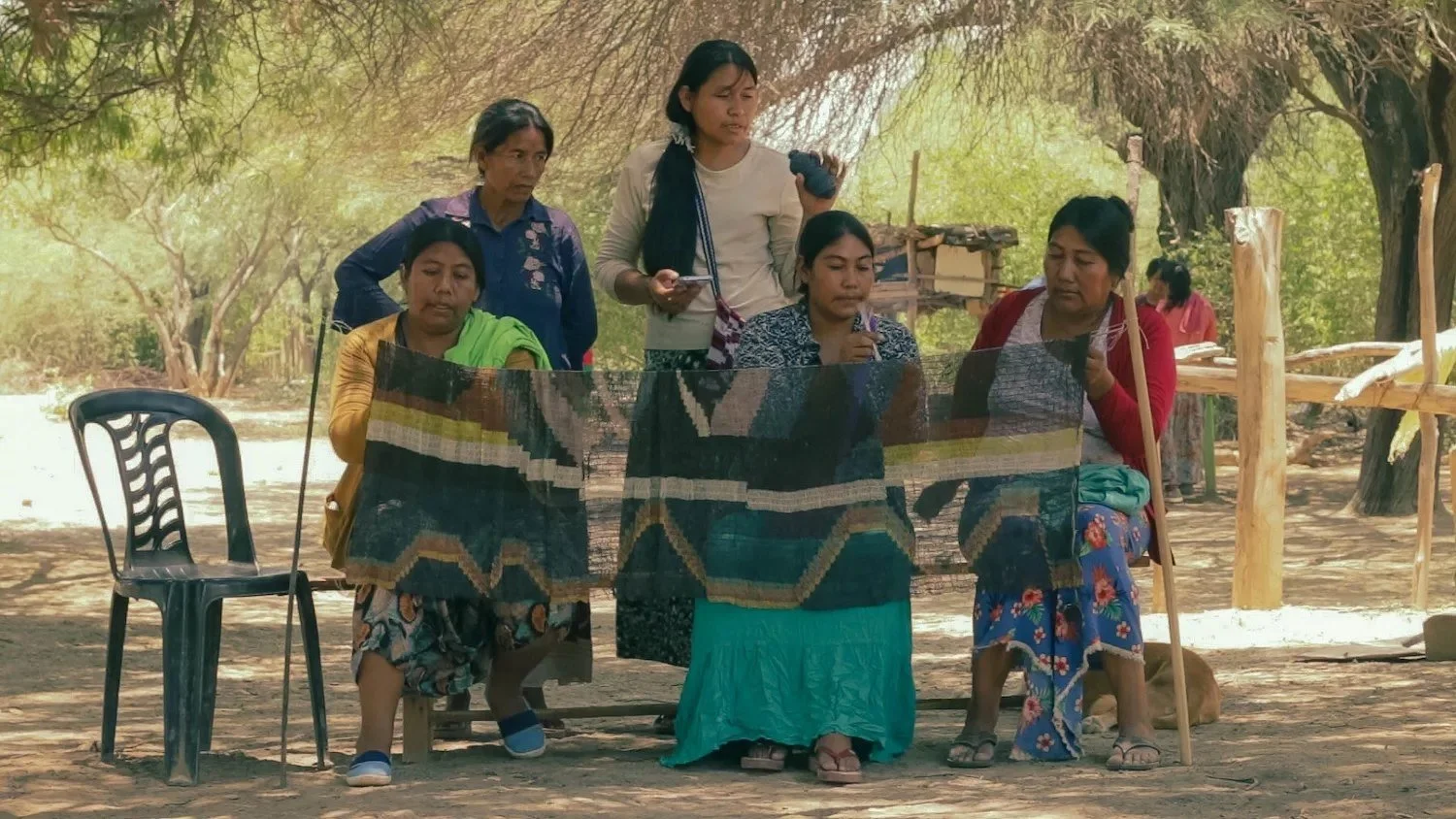Carolina Zemma in Conversation with Gallery Director Cecilia Brunson
In a city brimming with grandiose openings and fair-week frenzy, Cecilia Brunson Projects offers something rare: intimacy. Founded over a decade ago by Chilean curator Cecilia Brunson, the Bermondsey-based gallery has quietly become a touchstone for art from Latin America in London. Engaging deeply with both artist estates and contemporary voices, the gallery builds on a long-standing legacy of exchange between London and Latin America while strategically positioning itself in a competitive market that values scholarship, collector relationships, and long-term artist development.
This Frieze Week, while the art world gathers at Regent 's Park, Brunson presents The River that Covers Me, an intergenerational dialogue between Feliciano Centurión, José Leonilson and Matheus Chiaratti. The exhibition continues her commitment to honour overlooked modern figures while giving space to contemporary artists, offering a refuge far from home to many. From exhibition dinners that spill into her living-room to cross-continental conversations shaped by scholarship and warmth, the most recent brought Cristian González Cabrera (Human Rights Watch), Evan Moffit (The Observer) and Matheus Chiaratti together to address the history of queer rights in Latin America. Brunson’s ethos feels refreshingly human amid the spectacle, a welcome change of pace to the overwhelming London art scene.
Cecilia Brunson in her living room. Photo courtesy: Eliot Gelberg-Wilson and Cecilia Brunson Projects
Carolina Zemma: You founded Cecilia Brunson Projects more than a decade ago, long before London’s current interest in Latin American art. What was missing from the city’s cultural landscape that you wanted to build?
Cecilia Brunson: It was actually the opposite, I opened a gallery for Latin American art in London precisely because the UK already had a strong tradition of engagement with the region.
The University of Essex, for instance, placed Latin American Studies at the core of its founding vision. In 1971, Professor Dawn Ades created a pioneering course on pre-Columbian, colonial, and modern Latin American art, and with Professor Valerie Fraser, helped turn Essex into a hub for the field. Their scholarship and curatorial work—notably Ades’s landmark Art in Latin America: The Modern Era, 1820–1980 at the Hayward Gallery in 1989—helped establish the foundations for Latin American art’s recognition in Britain and led to the creation of Tate’s Latin American Art Committee.
So London made complete sense. I didn’t feel something was missing—rather, I wanted to build upon this legacy. As a Chilean moving to London via curatorial studies in the US, I sought to create a space that presented Latin American artists differently: placing overlooked historical figures in dialogue with contemporary voices, often for the first time. My mission has always been to platform exceptional artists across generations and highlight their influence on global art movements.
CZ: How has your vision evolved since then, has the gallery become what you originally imagined?
CB: I always envisioned the gallery as feeling like the home of a curator. Downstairs it’s a “white cube,” but behind the back wall, it opens into my family home. My children move through the space; my partner attends our openings. When I began hosting exhibition dinners in my living room and rotating the hang in the space, that’s when the vision fully came to life.
Installation view, The River That Covers Me: Feliciano Centurión, José Leonilson and Matheus Chiaratti, Cecilia Brunson Projects. Photography by Eva Herzog. Photo courtesy: Cecilia Brunson Projects.
CZ: Cecilia Brunson Projects stands out for its sense of intimacy and warmth, even extending into your home upstairs. How intentional is that approach? What are its challenges?
CB: It’s entirely intentional. I dread formal art world dinners. I prefer gatherings that flow, where people can move and talk freely. Our opening dinners are buffet-style, catered by a local vegetarian chef and take place in an informal sprawl across my living room.
Of course, this model blurs the boundaries between work and home—it’s a 24-hour commitment. But that intimacy is part of what makes the gallery feel alive.
CZ: Do you see intimacy and hospitality as part of your curatorial philosophy, or more as a natural reflection of how you work and live?
CB: It’s both. Even I can feel intimidated entering galleries that resemble luxury boutiques rather than creative spaces. I wanted to offer something different, something human, approachable, grounded.
Our gallery is run by a small, female-led team. I don’t think of myself as a ‘host’ so much as someone who creates an environment for exchange and curiosity.
Matheus Chiaratti, Anoitece nas escadas do seu prédio (Abetarda) [Night fallson the stairs of your building (Abetarda series)], 2024, glazed ceramic, 20 x 15 x 15 cm (77/8 x 5 7/8 x 5 7/8 in). Photography by Estúdio em Obra, courtesy of the artist, Cecilia Brunson Projects and Gisela Projects.
CZ: How do you navigate the fine line between celebrating Latin American identity and avoiding the risk of self-exoticizing it in a European context?
CB: I grew up with Gabriel García Márquez and Frida Kahlo, when Latin America was often romanticised through magical realism. But I was also shaped by the Brazilian and Venezuelan Concrete and Constructivist artists whose rigour and abstraction offered a different narrative.
So I never felt exoticisation was part of our internal discourse. I’m Latin American, of course my perspective carries its quirks, but the gallery’s approach is grounded in scholarship and dialogue, not stereotype.
CZ: You’ve created a strong community for Latin American artists and audiences in London. How do you ensure that this doesn’t become an isolated ecosystem?
CB: By constantly looking to expand it. We invite a wide network of curators, academics, critics and collectors into our orbit, and I travel often—even when we’re not participating in fairs, I’ll visit ZONAMACO, Art Basel Miami, etc. It’s about maintaining those active connections between London, Latin America and the wider art world.
CZ: Have you ever sought collaborations beyond the Latin American focus (either with artists from other underrepresented contexts or with more established European artists) to open new dialogues?
CB: Absolutely. Our collaboration with David Batchelor has been especially rewarding. His frequent travels to Brazil and fascination with colour have led him to explore textiles and quiltmaking, expanding his practice through these meaningful exchanges and Cecilia Brunson Projects has been the space where he has exhibited these works.
We also presented works by Janet Sobel, the Ukrainian-American modernist who influenced Pollock’s drip technique, in 2023, just before her exhibition at the Menil Collection. And we’ve shown textiles by Eliza Kentridge, a South African artist whose large-scale teabag tapestry was acquired by a Mexican collector. These dialogues between Latin America and the wider Global South feel vital and generative.
CZ: What is your perspective on the commercial side, can a small, independent gallery like yours truly sustain itself through sales in today’s market? Is segmentation the best strategy?
CB: I believe it can, through a deliberate, non-speculative programme. Like everyone, we’re navigating a turbulent market, but I remain optimistic. Working with a lean team and with integrity allows us to sustain meaningful relationships with artists and collectors alike.
Installation view. Claudia Alarcón & Silät, Oñil tha owentiche [Nuestros tejidosunidos / Our united fabrics], 2025, hand-spun chaguar fibre, woven in yica stitch, 175 x 190 x 6 cm (69 x 75 x 2 3/8 in). Photography by Lucy Dawkins, courtesy of the artists and Cecilia Brunson Projects.
CZ: What kinds of collectors or institutions support your programme? and have you noticed any change in the way London engages with Latin American art after the 2024 Venice Biennale?
CB: Our collectors are largely institutional and highly specialised, many sit on museum boards. London has been deeply engaged with Latin American art since the 1960s, but Venice 2024 certainly amplified visibility.
For example, the indigenous Argentinian collective Claudia Alarcón & Silat had their international breakthrough at the 60th Venice Biennale, but in a way it began in London. We showed their work in 2023, which brought them to Adriano Pedrosa’s attention. My chance meeting with the Argentinian curator Andrei Fernández at the Delfina Foundation in London earlier that year, paved the way for all of this.
CZ: How do you see London’s current cultural climate affecting the visibility and understanding of Latin American art?
CB: London’s current embrace has been remarkable, from Raven Row’s recent exhibition to the 2025 Royal Academy show on Brazilian art. There’s a growing curiosity and sophistication in how audiences engage with the region’s histories and aesthetics.
Claudia Alarcón & Silät, Tani’thaj ta nechie [El caparazón dela tortuga en los nuevos caminos / The tortoise’s shell on newpaths], 2025, hand-spun chaguar fibre, woven in antique stitch. Unframed: 81 x 59 cm (31 7/8 x 23 1/4 in). Photography by Lucy Dawkins, courtesy of the artists and Cecilia Brunson Projects.
CZ: Beyond the Latin American scene, what artists or art historical movements inspire you personally?
CB: When I studied at Bard, I was taught by Chinua Achebe whose book Things Fall Apart deeply shaped my understanding of cultural voice and resistance. I’ve also been profoundly influenced by Soul of a Nation at Tate, curated by Mark Godfrey and Zoé Whitley, and by artists like Frank Bowling, Julie Mehretu, Mark Bradford and Jeffrey Gibson.
CZ: What’s next for the gallery? What would meaningful growth look like for you at this stage?
CB: I’m planning a more female-focused programme for 2026. I’m also conscious that we’ve championed Indigenous and textile artists for some years, and now that some of these voices are entering the mainstream, I think the most meaningful next step will be to listen to understand where the most impactful conversations can emerge next.
Claudia Alarcón and members of the Silät collective weaving. Photo courtesy: Andrei Fernández and Cecilia Brunson Projects.
As Cecilia Brunson Projects continues to build bridges between generations and geographies, Brunson remains committed to her vision. This week the gallery brings their perspective to Frieze London (Booth A3), presenting works by Claudia Alarcón & Silät, the indigenous Argentinian collective whose international breakthrough at the 2024 Venice Biennale began, in part, through the gallery’s support. The presentation extends Brunson’s ongoing dialogue between historical depth and contemporary resonance. Sustained by curiosity rather than speculation, her approach demonstrates that independent galleries can thrive commercially while maintaining personal, rigorous and profoundly human-centered practices, an increasingly rare model in today’s art market.
You can find Cecilia Brunson Projects in Booth A3 at Frieze London this week.
Carolina Zemma
Contributing Writer, MADE IN BED


